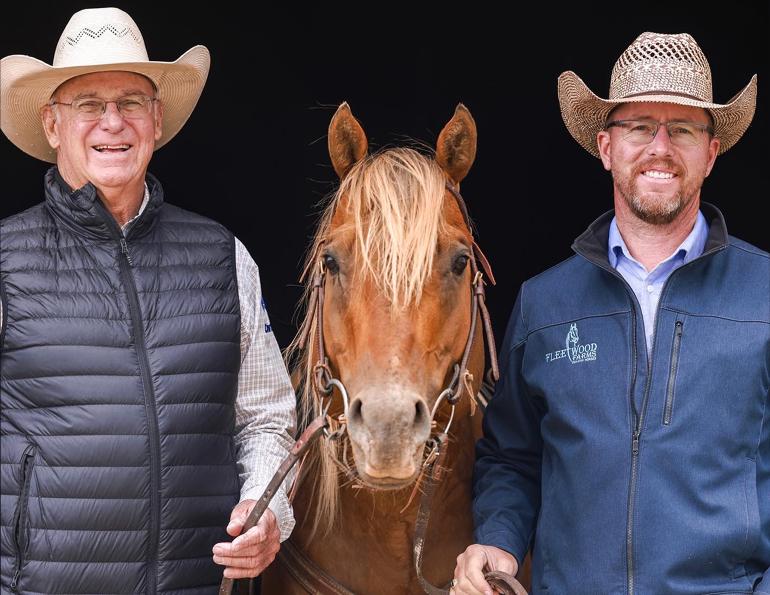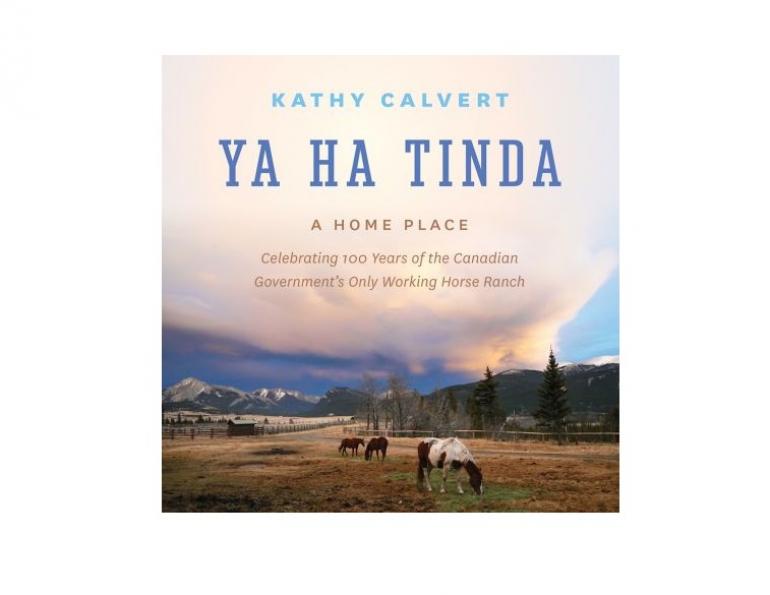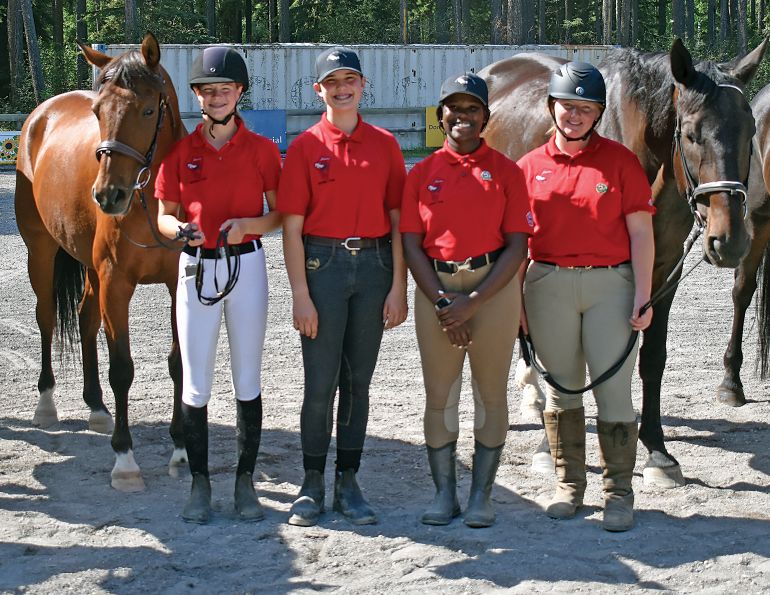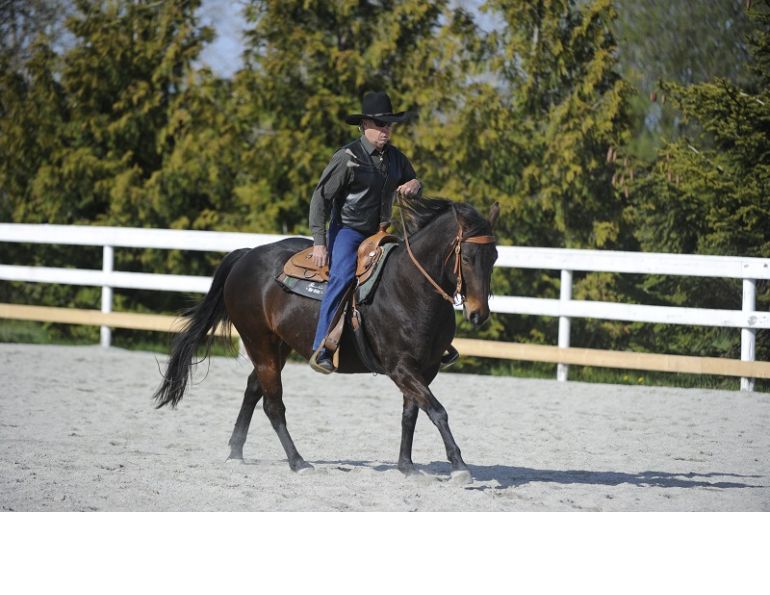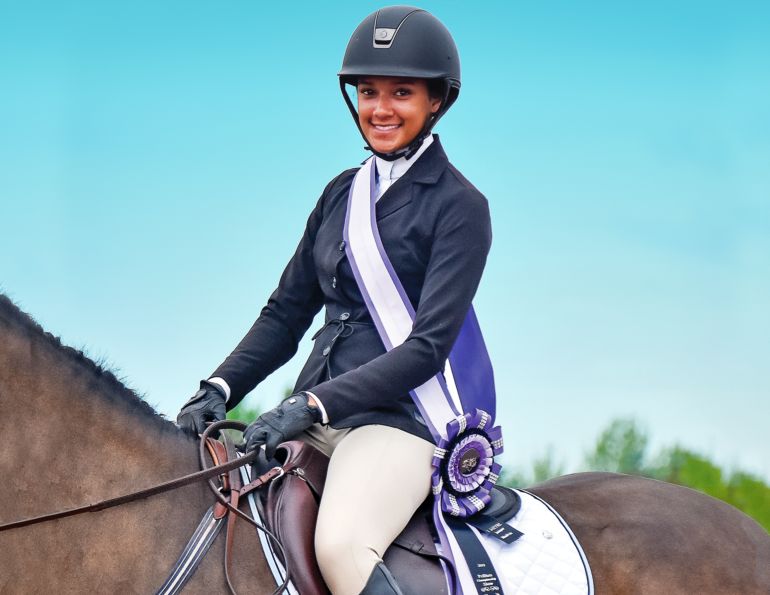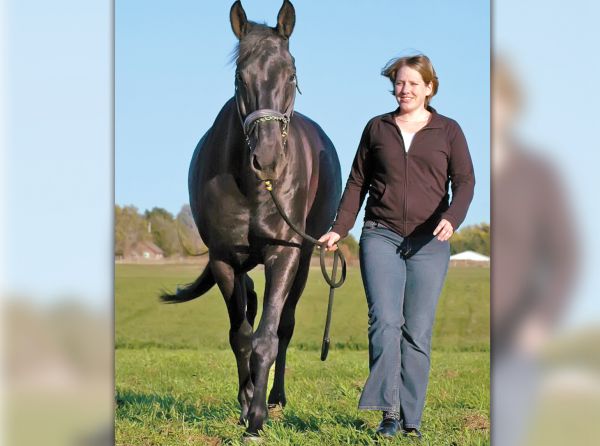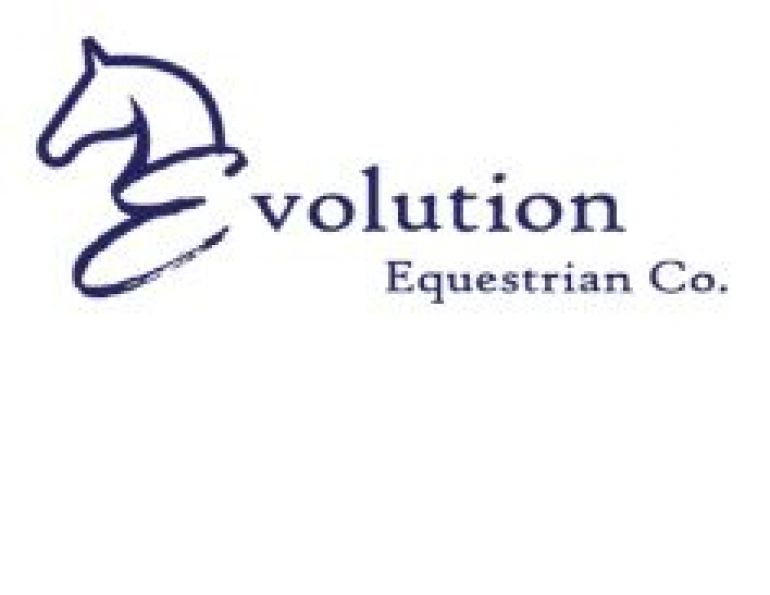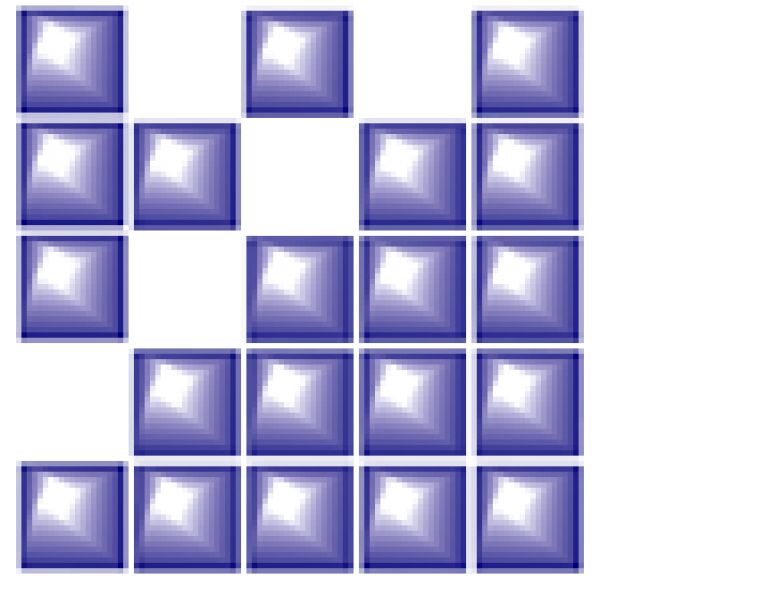By Tania Millen, BSc, MJ
Eighteen lucky riders participated in a horsemanship clinic with Al Dunning at Silver Slate Arena near Nanton, Alberta, on June 24-25, 2023, while about 50 auditors watched.
“No matter what you’re doing with your horse, you need fundamental horse training and horsemanship skills,” says Laurie Haughton, First Vice President of the Canadian Quarter Horse Association (CQHA), which hosted the clinic.
Dunning and his students have won 53 cutting, reined cow horse, and reining World and Reserve World titles, so he has a lifetime of horsemanship expertise to share.
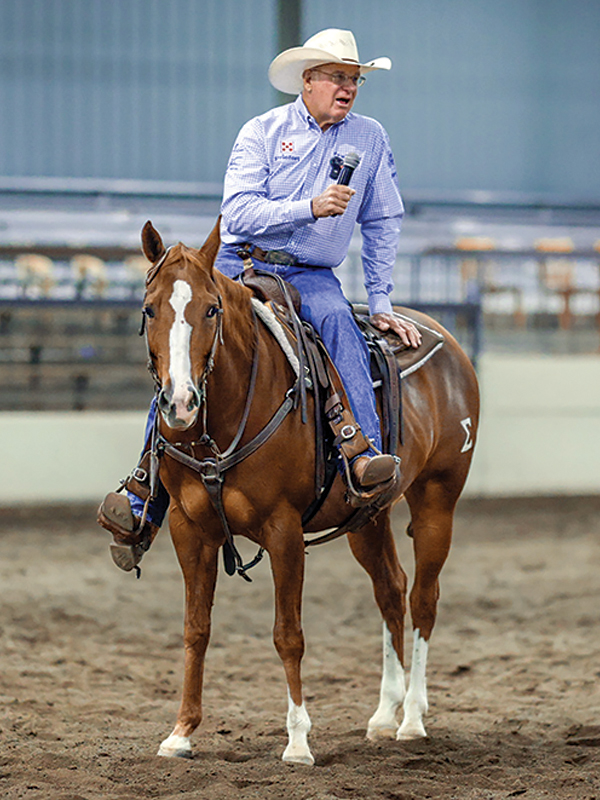
Dunning rode a borrowed horse to demonstrate movements and worked with each rider individually. Photo: Sascha Richardson
“Dunning is as close to a master horseman as you get,” says Ryan Fleetwood, who invited Dunning to teach the clinic, helped organize it, and rode in it.
Due to overwhelming demand, riders were selected to participate by lottery. Two groups rode each day: eight less experienced riders in a three-hour morning class and ten more advanced riders in an afternoon class. Auditors were encouraged to ask questions, plus the clinic was videotaped and is available on CQHA’s online learning platform.
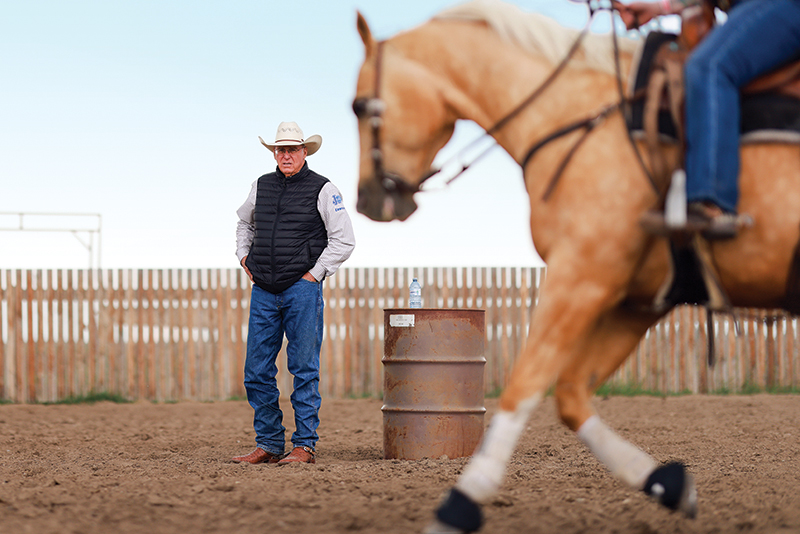
Due to strong demand from riders wanting to take part in the clinic, participants were selected by lottery. Those with less experience rode in the morning, and more advanced riders in the afternoon. Photo: Sascha Richardson
“We don’t get a lot of clinicians like this in Canada so the opportunity to audit a clinic of this calibre was awesome,” says Jessa Arnold who drove from Calgary to watch. “The riders were all different levels which shows that you can apply his methods to any horse.”

Ryan Fleetwood practices spinning on day two of the Dunning clinic. Photo: Sascha Richardson
Dunning started every class with a ten-minute introduction, then worked with each rider individually. He rode a borrowed horse and demonstrated movements when needed. Throughout the clinic, riders worked on Dunning’s “five essentials.”
Forward — Go forward readily with a good attitude, at the speed and direction the rider wants, while driving from the back to the front with the head down.
Turn — Follow their nose turning right and left. Turns evolve into spins and rollbacks.
Stop — From any gait. Start with halting from a walk and build to sliding stops.
Back up — Readily at the speed and direction the rider asks, using their hocks. Light, willing, and happy to back up straight or on a circle smoothly and accurately.
Collection — The hindquarters push forward into the rider’s hand and the horse has a round back. It’s the basis of side pass and lead changes.
Related: What is Contact? And Do Riders Really Need It?
“If you don’t know what to do when you’re riding, start with these five basics,” says Dunning. “We have to work on them all the time.”
Dunning also emphasized the importance of an athletic riding position: feet under your hips which are beneath your shoulders; elbows in and bent; hands level, with a straight line to the bit, looking like they’re carrying ice cream cones.
“You have to have body control,” says Dunning. “Your position has to be solid.”
He spoke about respecting horses’ limits, too.
“Don’t try to make a horse do something that he can’t physically or mentally do,” says Dunning, explaining that riders should buy horses suitable for their planned activities. “Horses can only be as good as their brain, athletic ability, and soundness.”
When shaping the horse’s frame, Dunning says, “Don’t use both hands at the same time. Your arms should work like pistons: straight back from the bridle with no wrist movement.
“To get the horse to stay in a rounded frame, use one leg then the other. When the horse is in the correct frame, push the hands forward. Your legs keep the horse round after you release your hands. Lift your hands to lower his head. If the horse gets hold of the bit, don’t grab on and start a fight. Use light hands.

During the reining spin, the horse follows its nose during the turn, and crosses the outside leg in front of the inside leg. Photo: Sascha Richardson
“Too many people mouth-ride. That’s a good way to wreck them. Preserve the horse’s mouth; ride off the leg from back to front.
Related: How to Set Up a Spectacular Stop
“When teaching the horse to neck rein, start by using a direct rein then add the outside [neck] rein and the outside leg. Next, start turning with the outside [neck] rein and only use the direct rein if it’s needed.”
Many riders worked on turnarounds.
“First, teach the horse to walk a small circle, bent to the inside around your inside leg. You should see their inside eye. Use both legs to get them to stay on the circle. Once they’re staying on the circle at walk without rein input, then jog it.”
Once the horse can circle, Dunning uses three steps to turn around:
- Reach down the inside rein and take the slack out.
- Pull the inside rein toward your inside hip.
- Add the outside neck rein.
Cutting horses step back and around while reining horses go forward in the turn, crossing their outside leg in front of their inside leg.
Related: Top 5 Myths About Cutting Horses
Riders worked on walk-lope transitions and circles, too, and received these instructions:
“To lope off from the centre of the pen, pick up your hand and bump your legs. Start walking with the horse bent to the inside, with its shoulders out and hips in. Ask for the transition while keeping your hands up, not low. This helps the horse stay balanced.
“Horses need to stand up straight on a circle, not lay over to the inside. To correct lean, weight the outside seat bone and outside stirrup, raise the inside hand, and drift the shoulders to the outside.”
Riders that wanted to work on sliding stops were first asked to stop their horses from the word whoa only, then by pulling on the reins only, and then when they simply quit riding. If horses can stop these three ways, then Dunning says they should perform good sliding stops.
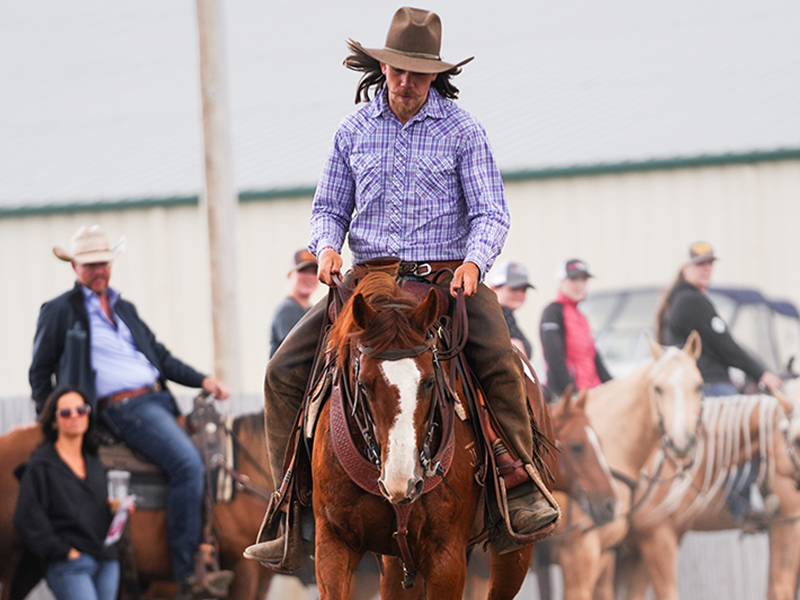
Dunning stressed respecting the horse’s limits, and not expecting work the horse is not capable of doing. Riders of all levels rode in the clinic, and everyone left with homework. Photo: Sascha Richardson
Here’s more advice:
“The rundown should start smooth, then speed up a little more, and then a little more. It should flow, not charge. If the horse charges off, bring them back to a trot.
“Ask the horse to stop on the down stride (when the horse’s front legs are forward).
“Never go forward after they stop. Always turn to the outside and go the other way.”
Riders also worked on flying changes and general rideability. Dunning had exercises for everyone, and all riders left with homework.
“I just want the basics,” says Mandi Matheson of Medicine Hat, who rode in the first session. “Any horse you get on needs basics. You start from there and work up.”
“He doesn’t sugar-coat stuff, which was fantastic,” says Shelbie Matheson, Mandi’s daughter from Kindersley, Saskatchewan who rode in the same session. “He identified little things that I’d never thought about and had no idea I was doing.”
“He’s got so many little tricks,” explains Mandi.
Dunning says that even when he’s judging top level reined cow horse events, he sees attention to detail and precision sometimes lacking.
“Patterns should be ridden exactly the way they’re written in the rulebook,” he says. Dunning explains that accuracy, locating the centre of the arena, circle size, and symmetry are all important.
During a lunchtime interview, he discussed other challenges he sees when judging.
“Nerves are probably the number one problem for most exhibitors,” says Dunning. “Many major exhibitors are using performance enhancing coaches to learn skills that help them relax.
“Some top-level riders are trying so hard to win they’re pushing horses to the red line,” says Dunning. “Sometimes things look pretty cool but what the rider did to the horse at home to get them to do it is disappointing.” But, he says, associations are doing a better job of monitoring the practice pen and reprimanding riders.
Ultimately, Dunning says riders must be consistent, understanding, and figure out positive ways to affect change in their horses.
“Don’t be picky. Only swing at the strikes,” he says.
This is the first year that CQHA has hosted a clinic. They’re planning one in eastern Canada in 2024.
Related: Starting Out on the Right Foot: Warm-Up Your Horse, Part 1
Related: Turning Around: Pirouettes, Cow Turns and Reining Spins
Main Photo: One of the most respected horsemen in the industry, Al Dunning has trained multiple world champions in cutting, reining, working cow horse, halter, and all-around. (L-R: Al Dunning, Ryan Fleetwood). Credit: Sascha Richardson



